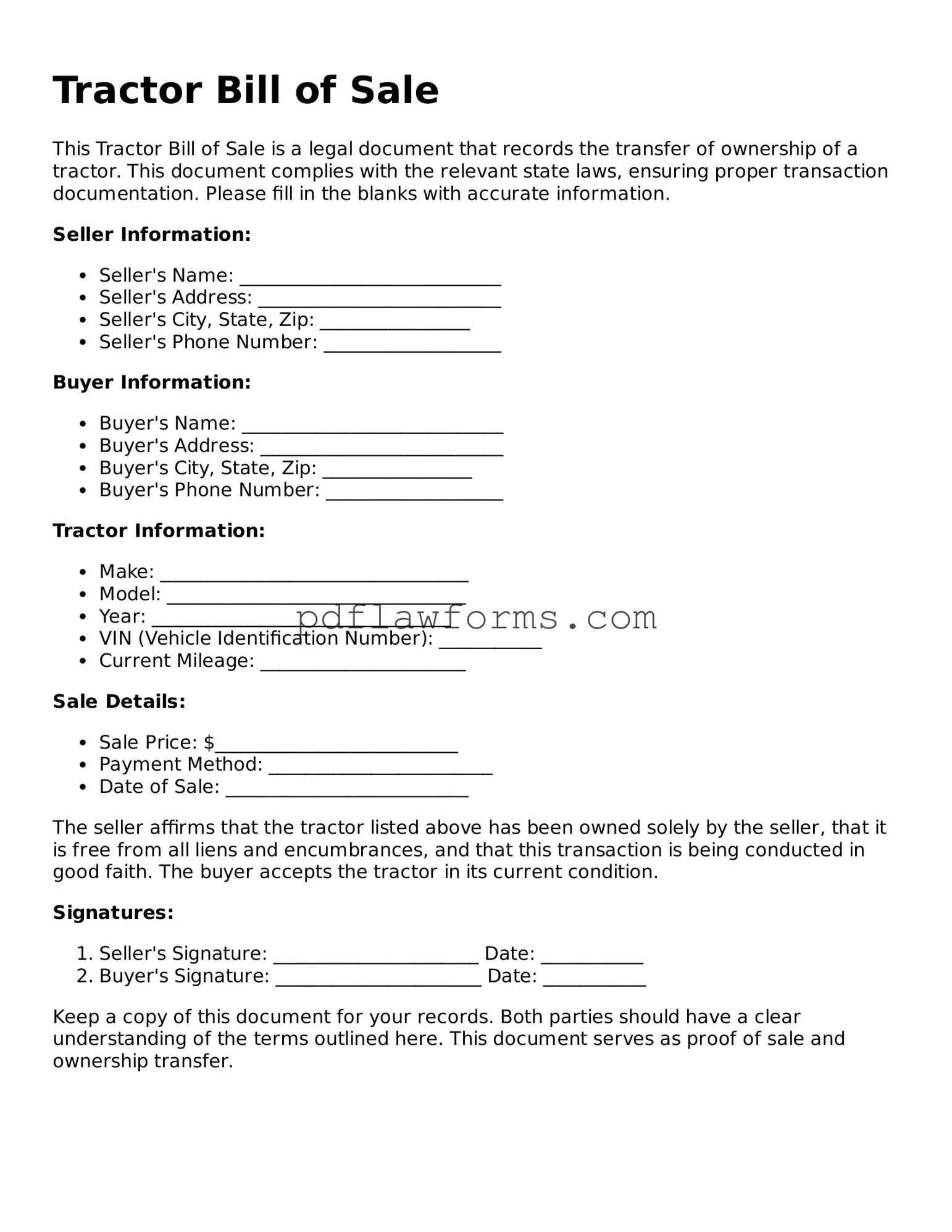Official Tractor Bill of Sale Form
A Tractor Bill of Sale form is a legal document that records the transfer of ownership of a tractor from one party to another. This form serves as proof of the sale, detailing essential information such as the buyer and seller's names, the tractor's description, and the sale price. Completing this document is crucial for ensuring a smooth transaction and protecting both parties' interests.
To fill out the form, please click the button below.
Make My Document Online
